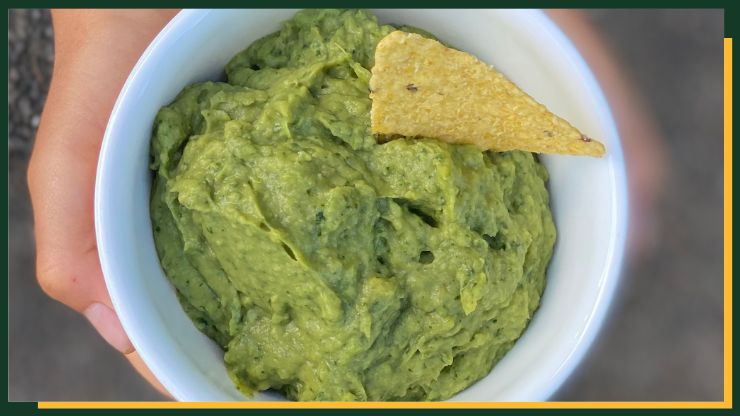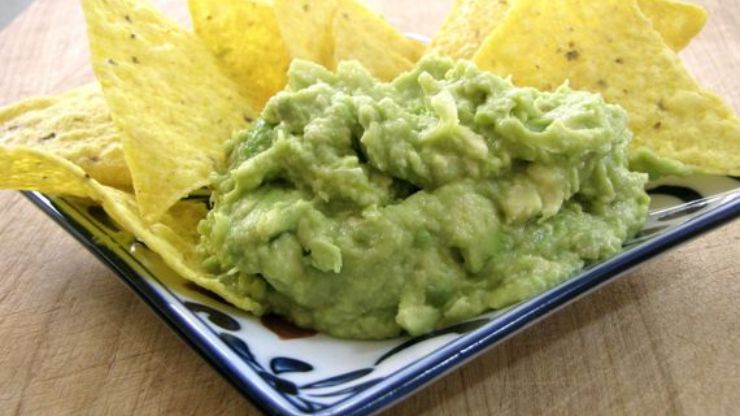Lacto-fermented guacamole cups are a delectable take on the popular avocado-based dip, adding probiotic health benefits and a richer taste profile. This transformative culinary journey involves harnessing the power of lacto-fermentation, a process that not only imparts a delightful tang but also preserves and enriches the ingredients.
A carefully prepared lacto-fermented brine blends well with ripe avocados, chopped tomatoes, red onions, garlic, jalapeños, and cilantro. As this fusion undergoes fermentation in a jar, the flavors meld and intensify, resulting in a unique, probiotic-rich guacamole.
This introduction sets the stage for an exploration into the simple yet profound art of creating lacto-fermented guacamole cups, inviting enthusiasts to savor the marriage of tradition and innovation in each delightful bite.
Table of Contents
ToggleBenefits of lacto-fermented foods
Lacto-fermented foods offer a spectrum of health benefits, contributing to both digestive wellness and overall well-being. These benefits arise from the metabolic activities of lactic acid bacteria during the fermentation process. Some notable advantages include:
- Probiotics: Lacto-fermentation introduces live beneficial bacteria, such as Lactobacillus and Bifidobacterium, into the gut. These probiotics promote a healthy balance of gut flora, supporting digestion and nutrient absorption.
- Enhanced Nutrient Availability: Fermentation breaks down complex compounds in foods, making essential nutrients more bioavailable. This can lead to increased absorption of vitamins, minerals, and other micronutrients.
- Digestive Health: The lactic acid produced during fermentation helps create an environment in the gut that inhibits the growth of harmful bacteria. This may help to enhance digestive efficiency and lower the chance of gastrointestinal problems.
- Immune System Support: The gut contains a sizable percentage of the immune system. Eating lacto-fermented foods can help balance out good bacteria, which may have a positive effect on immunological function.
- Increased Antioxidants: Fermentation can enhance the antioxidant content of foods, providing additional protection against oxidative stress and inflammation.
- Preservation of Food: Fermentation acts as a natural preservation method, extending the shelf life of perishable foods without the need for artificial preservatives.
Also, Read – Lacto-fermented apple butter
Simple Lacto Fermented Guacamole Cups

The benefits of fermentation are incorporated into lacto-fermented guacamole cups, giving the traditional guacamole a zesty touch.Here’s a simple recipe with six steps:
Ingredients:
- 3 ripe avocados
- 1 small red onion, finely diced
- 2 cloves garlic, minced
- 1-2 jalapeños, finely chopped (adjust to taste)
- 1 large tomato, diced
- 1/4 cup fresh cilantro, chopped
- Juice of 2 limes
- 1 teaspoon sea salt (or to taste)
Equipment:
- Glass or ceramic bowl
- Fermentation weights (optional)
- Airtight fermentation jar
- Cheesecloth or coffee filter
- Rubber band or string
Prepare the Ingredients
Peel and mash 3 ripe avocados; finely dice 1 small red onion, 2 cloves garlic, and 1-2 jalapeños; dice 1 large tomato; chop 1/4 cup cilantro. Combine in a bowl. Add juice of 2 limes and 1 tsp sea salt; mix well.
Transfer to an airtight fermentation jar, pressing down to eliminate air. Optional: use fermentation weights to keep the mix submerged. Cover with cheesecloth, securing with a band.
Ferment in a cool, dark place, pressing down daily. Taste after 2-3 days; continue until desired tanginess. Transfer to a clean jar, seal, and refrigerate for lacto-fermented guacamole cups.
Also, Read – Lacto-Fermented Pumpkin Butter
Mix the Ingredients
Dice 1 red onion, 2 garlic cloves, 1-2 jalapeños, and 1 tomato. Mash 3 avocados. Add 1/4 cup chopped cilantro. Squeeze in juice of 2 limes, sprinkle 1 tsp sea salt; mix. Transfer to airtight jar, pressing to eliminate air.
Optionally, use fermentation weights. Cover with cheesecloth, secure with a band. Ferment in a cool, dark place, pressing down daily. Taste after 2-3 days; continue for desired tanginess. Transfer to a clean jar, seal, refrigerate for lacto-fermented guacamole cups.
Don't just scroll, subscribe!
BuzzTrail's unique web-stories are the cure for boredom you've been waiting for.
Transfer to a Fermentation Jar
Spoon the blended guacamole into a sanitized, sealed jar for fermentation. To make sure the mixture is compact and to release any trapped air, gently press it down. If you have fermentation weights, place them on top to keep the guacamole submerged in its own juices, preventing mold.
This step is optional but aids in the fermentation process. Cover the jar with a piece of cheesecloth or a coffee filter, securing it with a rubber band or string.
This allows air circulation while protecting the guacamole from contaminants. The fermentation jar is now ready for the lacto-fermentation process to enhance flavor and introduce beneficial probiotics.
Add Fermentation Weights (Optional)
To further improve the fermentation process, you can optionally add fermentation weights to the guacamole in the jar. These weights help keep the mixture submerged in its own juices, reducing the risk of mold formation and promoting an anaerobic environment ideal for lacto-fermentation.
Simply place the weights on top of the guacamole, ensuring it stays below the liquid level. If you want to provide the best possible environment for beneficial bacteria to flourish, this step is especially helpful.
Fermentation weights are optional, however they can help ensure a good lacto-fermentation and produce a guacamole that is rich in probiotics and tang, as well as having improved flavor and texture.
Cover with Cheesecloth
Cover the fermentation jar with a piece of breathable material such as cheesecloth. Secure the cheesecloth in place using a rubber band or string. This covering allows air circulation, a crucial aspect of the lacto-fermentation process, while also preventing contaminants from entering.
The breathable nature of cheesecloth permits the release of gases produced during fermentation, preventing pressure buildup. This simple yet effective barrier protects your guacamole while allowing the natural fermentation to occur.
Regularly monitor the guacamole during the fermentation period, pressing it down to ensure it stays submerged, and adjust the cheesecloth as needed for optimal air exchange and protection.
Ferment
Place the covered fermentation jar in a cool, dark location to initiate the lacto-fermentation process. Over the next 2-3 days, regularly check and press down on the guacamole to submerge it in its own juices.
Taste periodically to gauge the level of tanginess, allowing for personal preference. The fermentation period enhances flavors and introduces beneficial probiotics. Depending on the desired tanginess, continue fermenting until the guacamole reaches the optimal taste.
Once satisfied, transfer the lacto-fermented guacamole to a clean jar, seal it, and store in the refrigerator. Enjoy the unique, tangy twist and added probiotic goodness in your guacamole cups.
Conclusion
In conclusion, the consumption of lacto-fermented foods extends beyond culinary delight, offering a palate-pleasing journey that enhances our well-being. From digestive support through probiotics to increased nutrient availability and immune system fortification, the benefits are both diverse and impactful.
Embracing the tradition of fermentation not only preserves flavors but also nurtures the symbiotic relationship between our bodies and these live cultures. As we savor the tang of fermented delicacies, we embark on a holistic approach to health, celebrating the transformative power of nature’s fermentation process.
FAQs
Which foods can be lacto-fermented?
Which foods can be lacto-fermented?
A variety of foods can undergo lacto-fermentation, including vegetables (e.g., sauerkraut, kimchi), dairy products (e.g., yogurt), and even beverages (e.g., kefir). The process introduces probiotics, enhancing taste and nutritional content.
What are the health benefits of lacto-fermented foods?
What are the health benefits of lacto-fermented foods?
Lacto-fermented foods offer probiotics for gut health, improved nutrient absorption, digestive support, and potential immune system benefits. They may also contain increased antioxidants and contribute to the preservation of food.
How long does lacto-fermentation take?
How long does lacto-fermentation take?
The duration varies based on factors like temperature and the food being fermented. Vegetable ferments often take 1-4 weeks, while dairy ferments like yogurt may take 6-12 hours.

